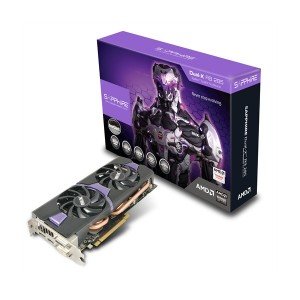 Let’s face it, most people who are getting a graphics card on their system are doing so to play games but they don’t need a huge amount of performance because they only have a 1920×1080 resolution display. Because of this, the majority of the graphics card sold on the market cost less than $300. AMD just released their latest graphics card, the Radeon R9 285, priced around $250 as a mainstream option for those that want a solid performance 3D graphics card. The weird thing is that if you look at the specs for the device, it looks to have less than the Radeon R9 280 that it is replacing. Can this card actually perform better with less?
Let’s face it, most people who are getting a graphics card on their system are doing so to play games but they don’t need a huge amount of performance because they only have a 1920×1080 resolution display. Because of this, the majority of the graphics card sold on the market cost less than $300. AMD just released their latest graphics card, the Radeon R9 285, priced around $250 as a mainstream option for those that want a solid performance 3D graphics card. The weird thing is that if you look at the specs for the device, it looks to have less than the Radeon R9 280 that it is replacing. Can this card actually perform better with less?
The Specifications
So exactly how does the new Radeon R9 285 differ from the 280 it is replacing? Here are some of the numbers between the two.
| Radeon R9 285 | Radeon R9 280 | |
| Stream Processors | 1792 | 1792 |
| Texture Units | 112 | 112 |
| ROPs | 32 | 32 |
| GPU Clock | 918MHz | 933MHz |
| Memory Clock | 5.5GHz | 5GHz |
| Memory Bus | 256-bit | 384-bit |
| Memory Bandwidth | 176 GB/s | 288 GB/s |
| VRAM | 2 or4 GB | 3 GB |
| Max TDP | 190W | 250W |
Just based on these numbers, it would appear that the Radeon R9 285 should perform slower than the previous R280. While it may have the same number of stream processors, it has a lower GPU clock speed and a narrower memory bandwidth. About the only areas that it seems to do better than the R9 280 is that it has a higher memory clock speed and a lower thermal rating.
AMD is quite clear in the marketing of this card that it has higher performance than the NVIDIA GeForce GTX 760 graphics card that is extremely popular.
Performance
In the majority of games, the Radeon R9 285 card actually did outperform the previous R9 280 and the GeForce GTX 760. The performance differences are not huge but can be noticed by allowing a slightly higher detail level while still keeping frame rates smooth enough for gaming at 1920×1080 which is the most common resolution right now. There are a few exceptions to this with Battlefield 4 being the most noticeable with the R9 280 being able to outperform it. Of course there are also games where there is no real difference between the three cards at all.
It should be noted that the performance of the card is best at that 1920×1080 resolution. While it is possible to go to a higher resolution such as 2560×1440, you often with have to sacrifice detail levels in order to keep the frames rates at an acceptable level. Still, this is little concern to the majority of PC gamers right now.
Reduced Heat
Probably the best outcome from this is that now there are more compact graphic card options for those with PCs that have limited internal space. For instance, Sapphire has a compact version of the card that is designed for small ITX class systems. It is still a double wide card but has a much shorter length meaning it can fit in compact cases such as small form factor systems used for home theater PC gaming.
The lower TDP rating also means that cooling fans should not have to run as fast as the past R9 280 graphics card. This should result is cards that produce less noise which is good for those people who want to have a more silent gaming system.
Value
Even with these considerations, the Radeon R9 285 is a nice step up from the previous cards. It adds some additional features such as TrueAudio technology not found on the R9 280 and the lower temperatures can allow for it to be used in a more silent gaming rig as well as potentially smaller cases thanks to reduce size cards.

Pingback: NVIDIA Improves Performance and Efficiency With GTX 980 and GTX 970 Cards - Tech for Anyone